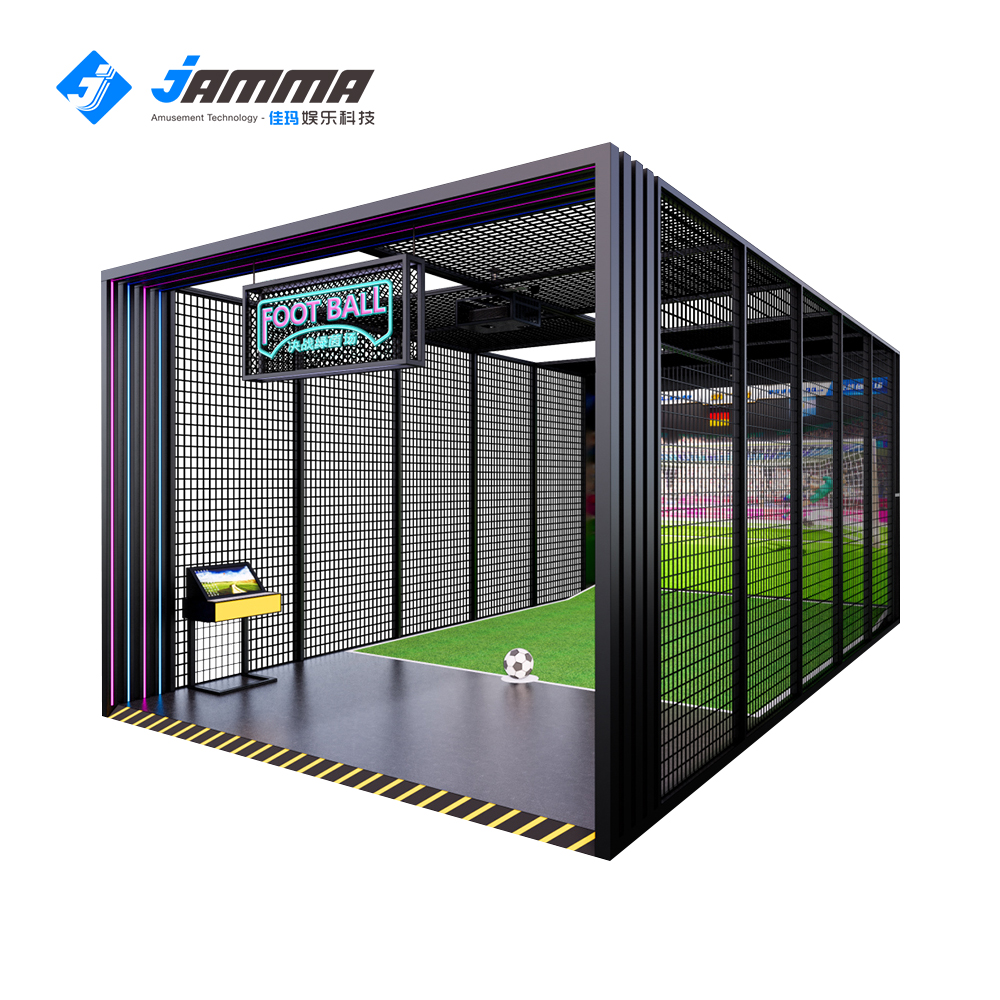How to Create an Indoor Football Simulator Shot Scoring Game?
Football enthusiasts are always looking for new ways to practice and enjoy the game. With advancements in simulation technology, it’s now possible to bring the thrill of football into your own home.
Designing an Indoor Penalty Shootout Football Simulation Game Space
Creating a dedicated space for your indoor football simulator is the first step. This space needs to be well-planned to accommodate the necessary equipment and provide a safe environment for play.
Key Considerations:
- Space Requirements: Ensure you have enough room for movement and the equipment setup. A clear area of at least 10×10 feet is recommended.
- Flooring: Use non-slip, cushioned flooring to prevent injuries and provide a realistic surface for play.
- Walls and Ceiling: Reinforce walls and ceiling if necessary, as balls may frequently hit these surfaces during play.
Planning the Layout:
- Goal Area: Designate a section of the room for the goal, ensuring it is sturdy and well-marked.
- Projection Area: If using a projector, ensure there is a clear, flat surface for displaying the simulation.
- Player Zone: Allocate enough space for the player to move freely and take shots.
By carefully planning the layout, you can create an optimal space for your football simulator.

Building a Field Where You Can Simulate Playing Football
Building a simulation field indoors requires selecting the right materials and setting up the environment to mimic a real football field as closely as possible.
Materials Needed:
- Artificial Turf: Provides a realistic playing surface and is durable for indoor use.
- Goals: Choose goals that are appropriately sized for the space and securely anchored.
- Markings: Use paint or adhesive tape to mark penalty areas, goal lines, and other field features.
Steps to Build Your Field:
- Measure the Space: Determine the dimensions of your field and ensure it fits within the allocated area.
- Install the Turf: Lay down artificial turf, ensuring it is flat and securely fastened.
- Set Up Goals: Position the goals at each end of the field, anchoring them firmly to prevent movement.
- Add Markings: Mark the field with the necessary lines and zones.
This setup will provide a realistic environment for your football simulation games.
Creating a Real Football Simulation Field Experience
To create a truly immersive football simulation experience, integrating technology is essential. Advanced systems can provide feedback, track performance, and enhance the realism of the game.
Key Technologies:
- Motion Sensors: Track player movements and provide real-time feedback.
- Projectors or LED Screens: Display realistic game environments and scenarios.
- Interactive Software: Simulates different game situations and tracks performance metrics.
Recommended Systems:
- SmartGoals: Uses light and sound to create dynamic training drills.
- PlayStation VR with Football Games: Provides an immersive virtual reality experience.
- TOCA Football Trainer: Offers ball delivery and tracking for precise training.
By incorporating these technologies, you can elevate your football simulation experience to a professional level.
Playing Football in Your Own Room
Playing football in your own room requires not only the right setup but also the appropriate training and safety measures to ensure a fun and injury-free experience.
Training Tips:
- Warm-Up: Always start with a warm-up to prevent injuries.
- Drills: Use simulation software to practice different drills, focusing on shooting, passing, and dribbling.
- Feedback: Take advantage of real-time feedback from the simulator to improve your skills.
Safety Measures:
- Protective Gear: Use shin guards and other protective equipment as needed.
- Supervision: Ensure an adult is present if children are using the simulator.
- Regular Maintenance: Check equipment regularly to ensure it is in good working order.
By following these tips, you can make the most of your indoor football simulator and enjoy playing football safely at home.
Choosing the Best Equipment and Suppliers
Selecting the right equipment and suppliers is crucial for creating a high-quality indoor football simulator.
Equipment Considerations:
- Quality and Durability: Choose equipment that is built to last and can withstand frequent use.
- Compatibility: Ensure all components work seamlessly together.
- Ease of Use: Opt for user-friendly systems that are easy to set up and operate.
Recommended Suppliers:
- PlayFootball: Offers a range of high-quality football training equipment.
- Elite Skills Arena: Known for their innovative football training systems.
- FIFA Approved Suppliers: Look for suppliers that meet FIFA standards for quality and performance.
By choosing the best equipment and suppliers, you can ensure a top-notch football simulation experience.
Budgeting and Ordering Your Equipment
Proper budgeting and planning are essential for setting up an indoor football simulator.
Budgeting Tips:
- Set Clear Goals: Define what you want to achieve with your simulator to help guide your budget.
- Compare Prices: Get quotes from multiple suppliers to find the best deals.
- Plan for Maintenance: Include ongoing maintenance costs in your budget.
Ordering Tips:
- Detailed List: Make a detailed list of all the components and materials needed.
- Bulk Orders: Consider bulk ordering to save on costs.
- Supplier Negotiation: Negotiate with suppliers for the best price and terms.
By carefully budgeting and planning your purchases, you can create an effective and affordable indoor football simulator.
What is the best software for football simulation?
The best software depends on your specific needs, but popular options include SmartGoals and PlayStation VR football games for their realism and interactive features.


